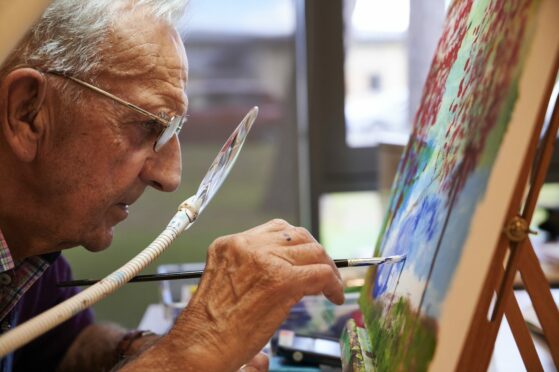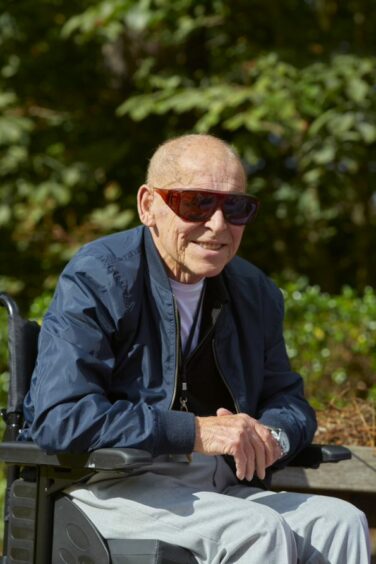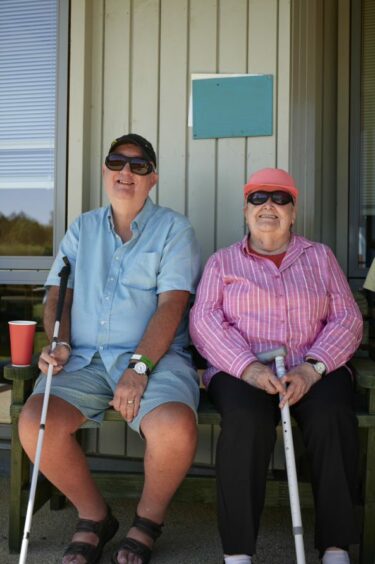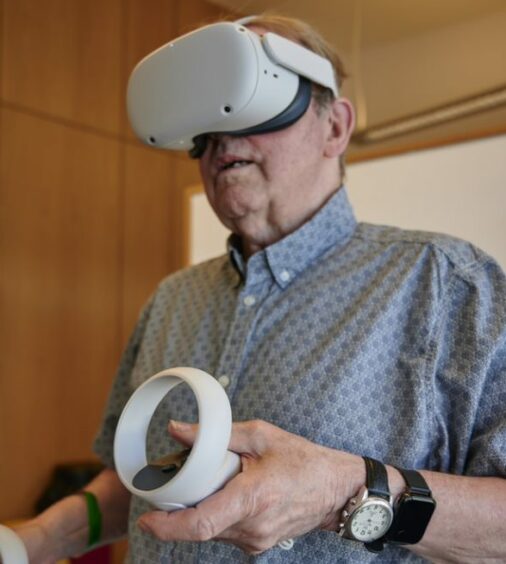
Changes to your sight can feel like an inevitable part of aging – but it’s by no means the only cause of visual impairment.
Losing part or all of your vision is scary, debilitating even. It can prevent you from enjoying the things you loved, and you may need help and support in every day tasks.
-
Some Sunday Post online content is funded by outside parties. The revenue from this helps to sustain our independent news gathering. You will always know if you are reading paid-for material as it will be clearly labelled as “Partnership” on the site and on social media channels,
This can take two different forms.
“Presented by”
This means the content has been paid for and produced by the named advertiser.
“In partnership with”
This means the content has been paid for and approved by the named advertiser but written and edited by our own commercial content team.
What can cause sight loss? Here, we explore the number of ways that you can lose your sight, partially or entirely, and what you can do if you are a veteran, or care for one, and need expert advice or practical help.
5 most common causes of sight loss
1. Macular degeneration
Age-related macular degeneration (or AMD) affects central vision over time, leading to central vision loss. In the UK, there are over 600,000 people whose sight is affected by this condition – a figure set to double by 2050. Worldwide, AMD is the cause of significant sight loss for over 10 million people, with the number expected to double by 2040.
2. Glaucoma
Glaucoma is a common eye condition, which is generally caused by a build-up of fluid in the eye, increasing pressure within the eye. This increase in pressure can damage the optic nerve that which sends the images from the eye to the brain. It affects the peripheral vision and may be very gradual, so it is often only picked up during a routine eye test. It can also cause sudden sight loss if not treated at an early stage.
3. Loss of vision through stroke
When someone suffers a stroke, it usually affects one side of the body. Can a stroke cause eye sight loss? Yes, sometimes it has an impact on sight loss too, known as hemianopia, and often this is missed by the medical profession. If you have had a stroke and are left visually impaired sudden sight loss can have a huge impact on your life.
Here you can read about how one Edinburgh veteran felt “robbed” when he was left visually impaired and had to medically retire from the Armed Forces following a stroke. However, thanks to the help he received from charity Sight Scotland Veterans, he regained his confidence and independence.
4. Brain injury or trauma
Brain injury or trauma also causes visual impairment or vision loss. In The Sunday Post (on October 2nd) we featured a story about former soldier David Martin and how he lost 80 per cent of his sight in his right eye. David, who served in the Black Watch, was involved in a horrific car crash on the A9. He sustained a brain injury which caused loss of sight in one eye.
However, David was given practical and emotional support from Sight Scotland Veterans, a Scottish charity that helps those who have served in the Armed Forces and lost their sight, partially or completely.
Do you know anyone who has served in the Forces and suffered sight loss following a brain injury? Sight Scotland Veterans could help.
5. Lost sight in service
Many lost their sight on the frontline during their National Service, as they were caught in enemy fire. In response, Scottish War Blinded charity was set up by its sister charity Royal Blind (now Sight Scotland) to help those affected.
Today, despite far less service men and women losing their sight on the frontline, the charity is still very much in existence – operating under its new name Sight Scotland Veterans. It now provides support to those who have served in the Armed Forces and are currently experiencing sight loss or most of forms of visual impairment. Find out if you, or a family member or friend, qualifies for assistance at sightscotlandveterans.org.uk or call 0800 035 6409. 
There are many causes of sight, but you can still lead an independent life.
Sight loss – Who can help?
Sight Scotland Veterans, the new name for Scottish War Blinded, is there for those who have served in the Armed Forces (at any point in their life, including those who did National Service) and is struggling with their sight. It supports those who have lost their vision in one or both eyes or are affected by visual impairment for any reason, not just those blinded by war.
The charity, which was founded in 1915, is there for you (or someone you know or care for) in a number of ways:
- by providing information and advice
- it also helps with independent living by providing equipment
- helps you to build social connections
- offers practical support
- you can learn digital skills through Sight Scotland Veterans
- attend one of two activity centres in West Lothian or Renfrewshire to socialise
- you can use the on-site gym, art room or IT suite at the centres
Don’t lose sense of who you are – contact Sight Scotland Veterans today. You will receive a one-to-one assessment to ensure you receive the help you need. Sight Scotland Veterans can help you to live as independently as possible with your eye condition.

Enjoy the convenience of having The Sunday Post delivered as a digital ePaper straight to your smartphone, tablet or computer.
Subscribe for only £5.49 a month and enjoy all the benefits of the printed paper as a digital replica.
Subscribe © Supplied
© Supplied © Supplied
© Supplied